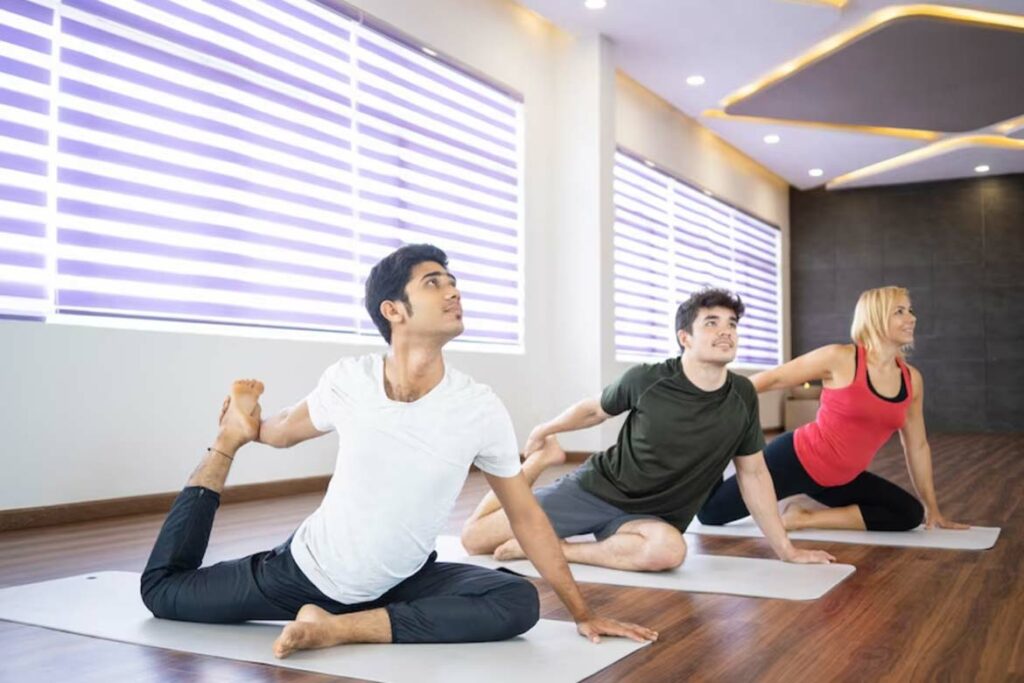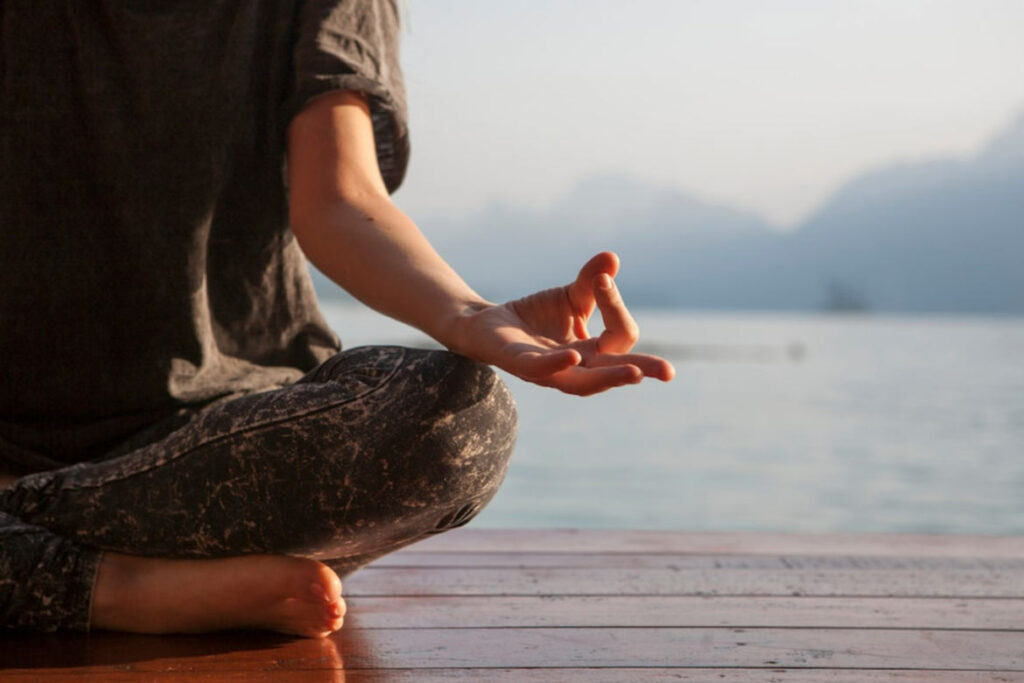The “Prana,” or life energy, that is inside us is what sustains our bodies and minds. Pranayama is the practise of functioning within the realm of prana.
Aura is created around the body by prana. A sickness manifests in your Prana long before it affects your physical health. The practise of yoga heightens your soul, extends your aura, and purifies the energy all around you. Both the body and the intellect benefit from its clarity.
Dedicate part of your important time to yourself, and wait patiently for the outcomes that will increase your flexibility, health, calmness, efficiency, and zeal.
Are you unsure of where to begin with yoga? You’ve arrived at the right place. Yoga can help you find a deep feeling of harmony within yourself and with the world around you. Yet, it’s crucial to create the ideal ambiance both inside and outside before you begin. Here are ideas to consider to get the most of your yoga practise:
- Learn yoga with a certified yoga instructor
It is recommended to begin your yoga practise with the help of a certified yoga instructor who can show you how to do each technique properly. You could learn yoga asanas (postures) correctly and prevent injuries if you do this. It’s possible that some of the theories or methods taught in yoga are novel, but it’s a good idea to retain an open mind because it will help you see the world more broadly and improve your yoga practise.
- Share your medical conditions with your instructor

Read more: Have you tried Burpees? Know the benefits and right way to perform Burpees
Before beginning your yoga instruction, let your Yoga instructor know if you have any medical conditions. It will enable the instructor to adapt your yoga asana practise and prevent any difficulties or injuries..
- It’s important what you wear
When attending a yoga class or performing yoga at home, dress comfortably. Furthermore, keep belts and a lot of jewellery off since they could interfere with your yoga practise.
- Take a bath or a shower
As water contacts your body when you are bathing, your interiority is also cleansed in addition to your skin. Since we want the body’s cellular structure to be charged with a distinct level of energy when doing yoga, it is advisable to use chilly or tepid water since it opens the pores between the skin cells.
- Be Consistent
Yoga asanas are best performed in the morning, but you can practise at any time of day as long as you are consistent. Don’t let the fact that you can’t practise yoga in the mornings be a reason to stop altogether!
- Diet should be monitored
It is recommended to practise without food or at least two to three hours after your last meal. Also, drinking three to four litres of water a day is encouraged because it will aid in flushing the toxins that your yoga practise releases from your body.
- Warm up before stepping onto the yoga mat
Moderate warm-up activities help the body to relax and become ready for the following yoga asanas. These are some warm-up activities:
- Massaging the head, brows, nose, and cheeks: Whenever we make a mistake, we automatically put our palm on the head to console ourselves. This indicates that the brain’s blood flow is decreasing and that a massage is necessary.
- To ease any stiffness, rotate your neck both clockwise and anticlockwise.
- You can get rid of the sluggishness by shaking your hands and pumping your shoulders.
- Enjoy the asanas

The yoga asanas are much more enjoyable when you maintain a soft smile since it calms your body and mind. You can extend your body more and push its limits further when your mind is at ease.
- Push Your Boundaries
Just perform as much as you can comfortably, and then simply extend a little more to improve body flexibility. Remember to use your breath as a guide: when it is light and lengthy, the muscles start to relax; when it is jagged or uneven, however, it indicates that you have overexerted yourself. Moving just a little bit beyond your comfort zone will offer a challenge as you advance and learn new yoga asanas, keeping your yoga practise interesting.
- Each yoga pose is distinct
Be content with where you are in your yoga practise and avoid comparing yourself to other practitioners there. Keep in mind that every body type is distinct and that everyone has varying levels of competence. While some people might be able to perform a certain yoga asana with ease, others might require a bit more time and practise to master it. Thus, avoid feeling under pressure and overworking yourself. With frequent practise, your flexibility and effectiveness in doing yoga poses will increase.
- Relax your body

Read more: Exam ready! 7 yoga poses that helps in reducing exam stress
Don’t be in a rush to get up and start moving around once your yoga asana practise is through because you have tasks planned for the day. Yoga Nidra is a fantastic idea since it helps the body chill down and concentrate the energy that comes from doing yoga asanas. After a yoga session, Yoga Nidra is helpful in thoroughly resting the mind and body.
- Ensure that your bowels and stomach are empty
Yoga is a form of energy balancing that goes beyond simple physical activity. If you wish to move your energies upward, everything that is not the body should be out of the body. Thus, be sure to practise yoga before eating—ideally, before breakfast—and after having a bowel movement. In the same spirit, you shouldn’t eat anything or drink anything while practising yoga.
